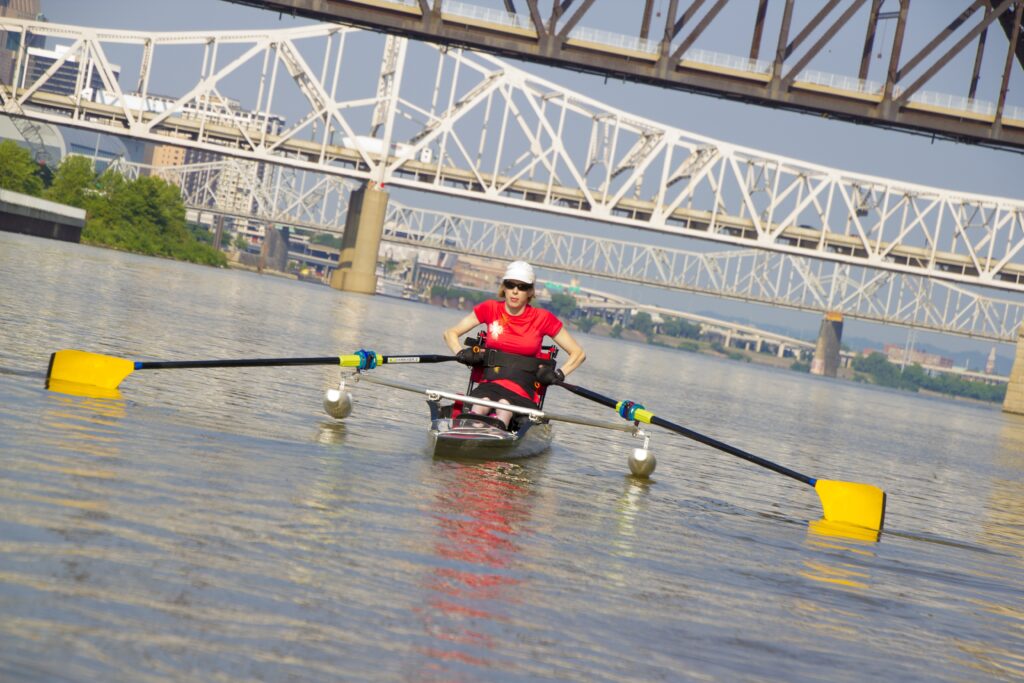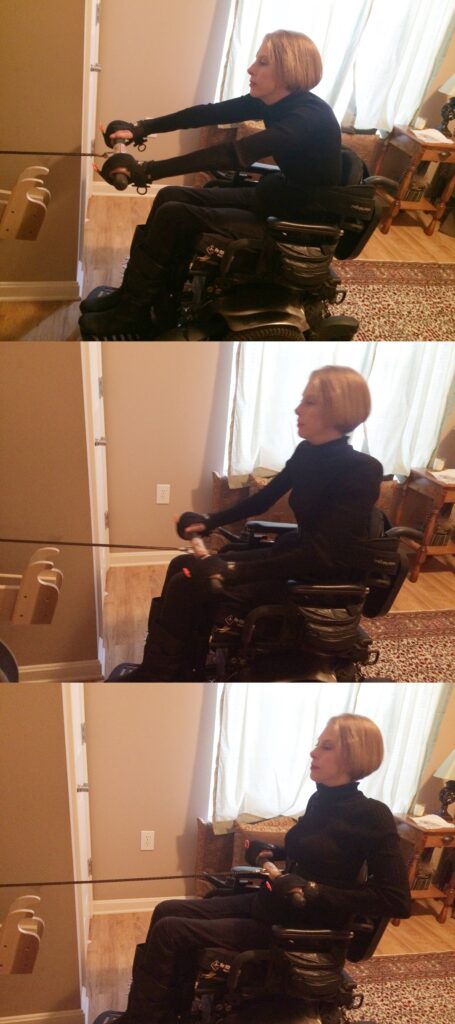Getting a good cardio workout with a spinal cord injury can be difficult, but it’s very important. After years of living with a spinal cord injury, I can attest to the benefits of working out. Not only do I feel better (I love endorphins!), but I truly believe I am more independent and stay healthier due to staying active physically. Let’s cover the Who, What, How, and Why of cardio workouts and spinal cord injury.
Who
According to research, cardiovascular disease or dysfunction is the second most common underlying cause of death in persons with chronic spinal cord injuries.1 Rates of cardiovascular disease in the SCI population are three to five times higher than in the able-bodied population.2 Cardiovascular disease is most often associated with a sedentary lifestyle. What can we do to keep moving?
What
A good cardio workout can come from pushing, playing basketball, rugby, rowing, swimming, or hand cycling, among other activities. The important thing to notice here is that a cardio workout can actually be fun and socially engaging. No, it’s not a night on the town, but playing sports or being at a gym with friends can provide great social support, as well as a great physical workout.

How
How can you know when you are exercising hard enough? While able-bodied individuals can monitor their heart rate to know if they are getting a good cardio workout, that method doesn’t always work for those of us with spinal cord injuries. People with T6 level injuries or higher lack the nervous system’s ability to get their heart rate to a “normal” level for a moderate to vigorous intensity workout.
Low heart rate and blood pressure
One study reports that “the average heart rate in individuals with SCI above T6 reached only 110 beats/min, whereas the other groups had values of 130-150 beats/min at the end of exercise”.3 Without being able to gauge a workout via heart rate, one way to discern if you are getting a good cardio workout is to ensure you are breathing heavily, but are still able to carry on a conversation.4
As a result of a lower-than-average heart rate during exercise, low blood pressure can occur. Blood pressure can become low enough that a person may feel dizzy or faint. This is more common in cervical level injuries than thoracic level injuries.5 Using compression stockings, staying well-hydrated and using medication, if required, are options to help with low blood pressure. I found the abdominal binder I use for stability in rugby is more useful to stabilize my blood pressure than my physical stability. I now use the binder while rowing and playing tennis.

Another recommendation, from physical therapist Kristin Kaupang, is to start your workout slowly and steadily increase its intensity.4 I have found the first three to five minutes of my work out to be the most difficult. I experience muscle cramping, difficulty breathing, and feeling lightheaded. As I press through those first few minutes, my blood pressure will slowly stabilize and I am able to increase the intensity of my workout.
Why
The good news is that research has shown that even six weeks of moderate to vigorous upper extremity exercise – 3 days per week – shows improvement in cardiovascular health in SCI.2 With the average life expectancy of person with SCI getting near-normal, we all have a lot to look forward to and need to keep our bodies in as good as shape as possible. Getting a good cardiovascular workout is one step in the process of maintaining – or regaining – a healthy lifestyle for me.
Remember to always check with your doctor before starting an exercise program.
Keep moving!
You might also like these links:
- Indoor Ergometer Workout
- How to Do an At-Home Wheelchair Workout (Video)
- Maintaining Your Health After SCI
References
1. Grigorean V, Sandu A, Popescu M, et al. Cardiac dysfunctions following spinal cord injury.
Journal of Medicine and Life. 2009;2(2):133-145. https://www.ncbi.nlm.nih.gov/pmc/articles/PMC3018985/. Accessed on 20 Dec. 2016.
2. Warburton DER, Eng JJ, Krassioukov A, Sproule S, the SCIRE Research Team. Cardiovascular Health and Exercise Rehabilitation in Spinal Cord Injury. Topics in spinal cord injury rehabilitation. 2007;13(1):98-122. https://www.ncbi.nlm.nih.gov/pmc/articles/PMC3377606/Accessed 20 Dec. 2016.
3. Kaupang K. Get moving: Exercise and SCI. Presented on 12 Feb. 2013 at the University of Washington Medical Center. http://sci.washington.edu/info/forums/reports/exercise_2013.asp#toc Accessed 20 Dec. 2016.
5. Claydon VE, Hol AT, Eng JJ, Kraussiokov A. Cardiovascular responses and postexercise hypotension after arm cycling exercise in subjects with spinal cord injury. Arch of Phys Med Rehabil. 2006 Aug:87(8):1106-14. https://www.ncbi.nlm.nih.gov/pubmed/16876557. Accessed 20 Dec. 2016.
This article was originally posted on BardCare.com.







